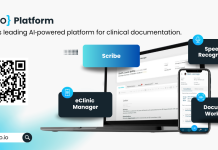Michael Chalmers, Managing Director at Contino, explores the three easy steps that can be taken to uncover the potential of cloud in the public sector
Digital transformation has long been high on the public sector agenda. Rarely, however, has this promise translated into action. Yet, a migration to the cloud, adoption of advanced analytics and commitment to real digital transformation hold huge potential for governments: higher quality services for citizens, lower costs for taxpayers and new data insights for businesses. A drive to ditch heritage systems and embrace ultra-capable modern technologies could have a ripple effect across entire nations.
Many governments are seeking these improvements and the advantages for their citizens. For instance, those making benefits applications more accessible through online systems recognise that IT and digital have a leading role to play in the delivery of better public services.
An over-reliance on heritage systems places an obstacle in the way of newly innovative, scalable and reliable public cloud services. Even the most optimistic departments still struggle under the weight of outdated systems and outsourced teams. What are the foremost issues, and how can we fix them?
Leverage the cloud to break free of vendors, debt and insecurity
The problem is that governments are locked into outdated ways of working. They are typically constrained by old vendor contracts, limited budgets and major information security concerns. The cloud can help to reduce the burden of these issues, clearing the way for innovation. Here’s how:
Vendor lock-in
A government department locked into an expensive contract with an outdated vendor, paints a pretty grim picture. Poor value for money means taxpayers are essentially funding large consultancies for the privilege of keeping the public sector stuck in old, inefficient ways of working. Even some of the most forward-thinking teams within governments have to innovate around the dominant vendor.
The cloud can help. Aside from the up-front benefits of improved visibility, agility and scalability, migrating to the cloud is an opportunity to break up with outdated vendors and, instead, bring in in-house technological competencies that were once outsourced.
Funding limitations
In the public sector, as with any area of business, effective innovation walks the line between what’s difficult and what’s impossible. The relationship between funding and citizen ROI presents a unique challenge for government agencies. This correlation limits the ability for teams to do the kind of experimentation needed to produce digital services that are truly aligned with citizens’ needs.
Within the DevOps world, multi-faceted teams are responsible for delivering small, well-defined packages of work—from conception to consumer. The public sector could benefit from something similar: focusing on incremental policy changes, testing their impact through hypothesis-driven feedback and refining accordingly.
Security concerns
When it comes to cloud, innovative teams often find themselves set back by the security concerns. However, an increasing number of cloud service providers are gaining certification which verifies that they have high quality security, capable of handling public sector information. Hopefully, more cloud vendors getting certified will help address these concerns. After all, the cloud does not equal a “wild west” security approach, but rather, provides specific controls to improve a government agency’s security position.
For the public sector, the best approach is a low-risk application that can be moved to the cloud and then used as a proof-of-concept to drive change.
What next?
Government agencies have the technology for harnessing the cloud and boosting services at their fingertips. Indeed, many continue to speak about their commitment to delivering services fit for the digital age. Putting this into action is a different story, however. They’ll need large-scale technological change, prompted by a migration to a secure, scalable cloud.
Government agencies need to get moving. As 2020 has proven, the public sector must have the capability scale operations at speed – and heritage systems simply aren’t prepared for this. A migration to the cloud, and implementation of initiatives to digitise government services, will finally lay the foundations of a public sector that embraces a long-term commitment to innovation for the benefit of its citizens.











